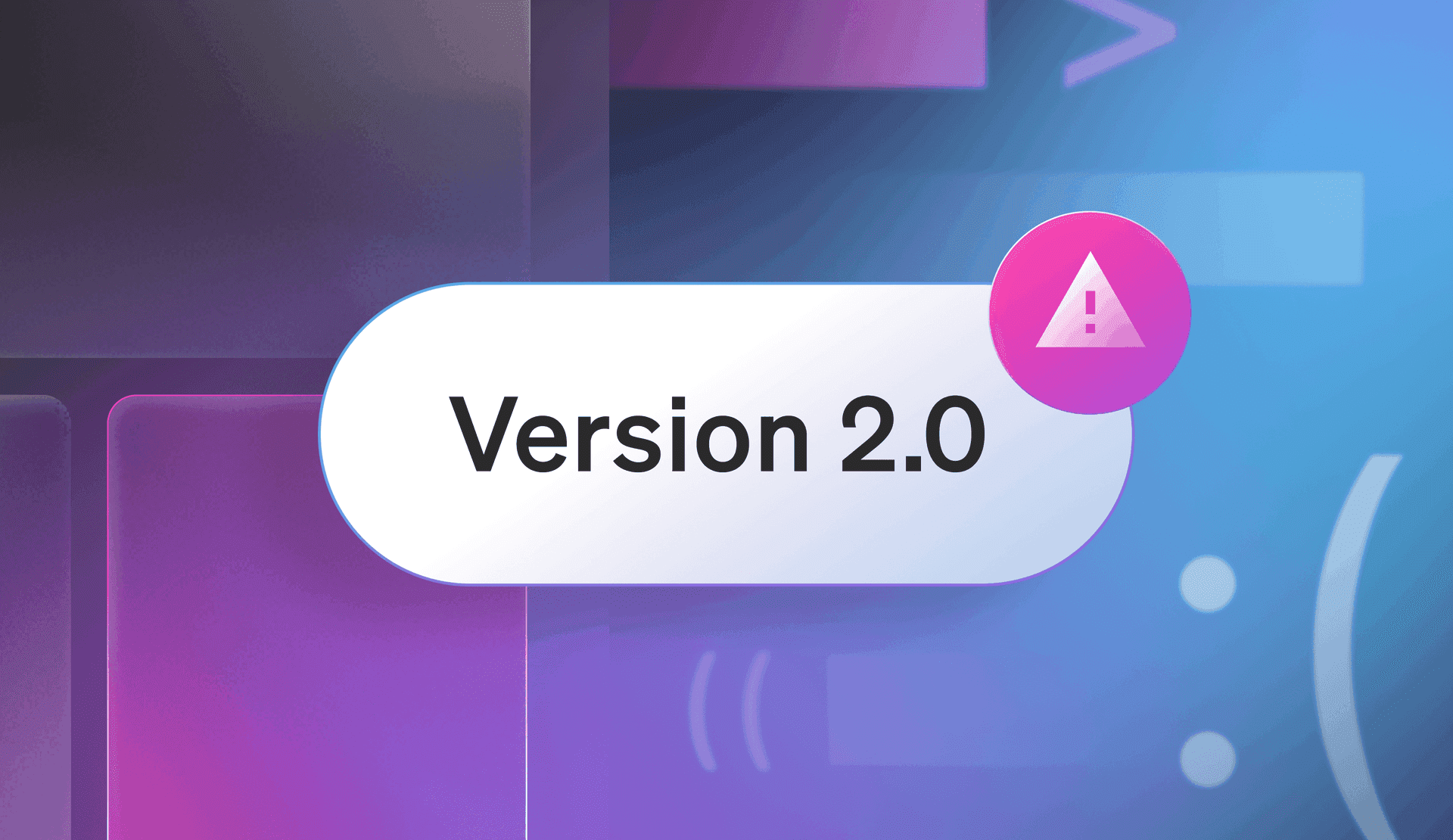Companies build and release new software more quickly with each passing year. However, the relentless pressure to release faster often results in product updates that introduce performance issues or compromise the reliability of existing features—which can create user dissatisfaction and increase the risk of customer churn.
As software systems grow more complex, prioritizing safety, reversibility, and continuous improvement is necessary for sustainable success.
Proposed goals vs. real-world experiences
Software updates are often designed with the intention of improving user experience.
While these goals are clear, execution often falls short. For example, the Sonos app faced severe backlash when an update that was intended to streamline user experience caused widespread device connectivity issues and unresponsive speakers.
Users flooded forums and social media, demanding a return to the previous version. The company struggled to fix the issue, and two holiday season product launches were rumored to be delayed.
This was not an isolated case. In 2018, TSB Bank, a British retail and commercial bank, experienced a failed IT migration to a new platform due to inadequate testing and integration problems.
As a result, customers couldn’t access their accounts and faced financial errors for weeks. The aftermath resulted in £330 million (~$451 million) in compensation costs and fines, as well as loss of customer trust and significant harm to the bank’s reputation and market share.
These examples demonstrate how the absence of a structured release approach paired with inadequate real-world testing can have disastrous results.
Addressing the pitfalls of regular updates
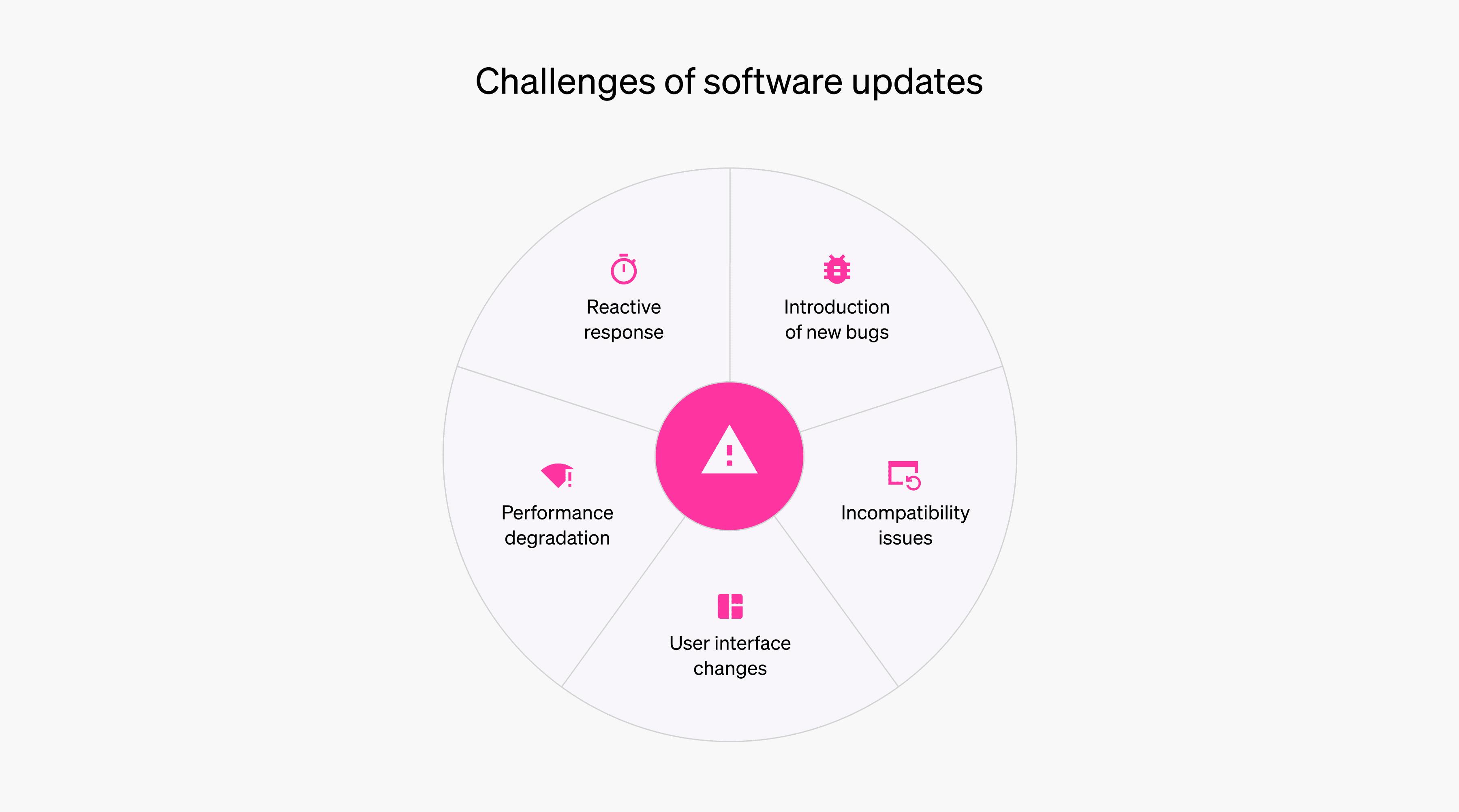
Updating software regularly presents several challenges:
- Introduction of new bugs. Despite testing, updates can introduce bugs that disrupt functionality, often discovered only after users report on them.
- Incompatibility issues. Updates may not work with thousands of digital devices or software, causing devices to malfunction and frustrating users.
- User interface changes. UI redesigns, intended to improve usability, can confuse or alienate long-time users accustomed to existing workflows.
- Performance degradation. Updates meant to enhance performance can backfire, leading to slower load times, crashes, or higher resource use.
- Reactive response. Proactive incident management remains challenging despite advanced tools. Teams often face alert overload during crises.
To ensure smooth, risk-free feature releases, enterprises must adopt solid strategies focused on safety, reversibility, and continuous improvement. Addressing update pitfalls effectively enhances user trust and experience, balancing innovation with reliability.
Safety first
By releasing software to a small, manageable group of users, you minimize risk. If something goes wrong, it’s contained. Think of this like opening a new restaurant. Instead of inviting hundreds of people on the first day, you start with a soft opening, allowing a limited number of guests to experience the menu and service. This gives the staff time to adjust, resolve any issues with the kitchen, and collect feedback. If problems arise, they can be fixed before the grand opening, ensuring a smoother experience for the larger crowd later on.
By putting safety first, progressively releasing software minimizes the impact of any problem or unexpected issue, allowing for quick fixes with less damage. This progressive release strategy is common among large enterprises like Google, Facebook, and Amazon.
Using different safety checks for different types of experiences
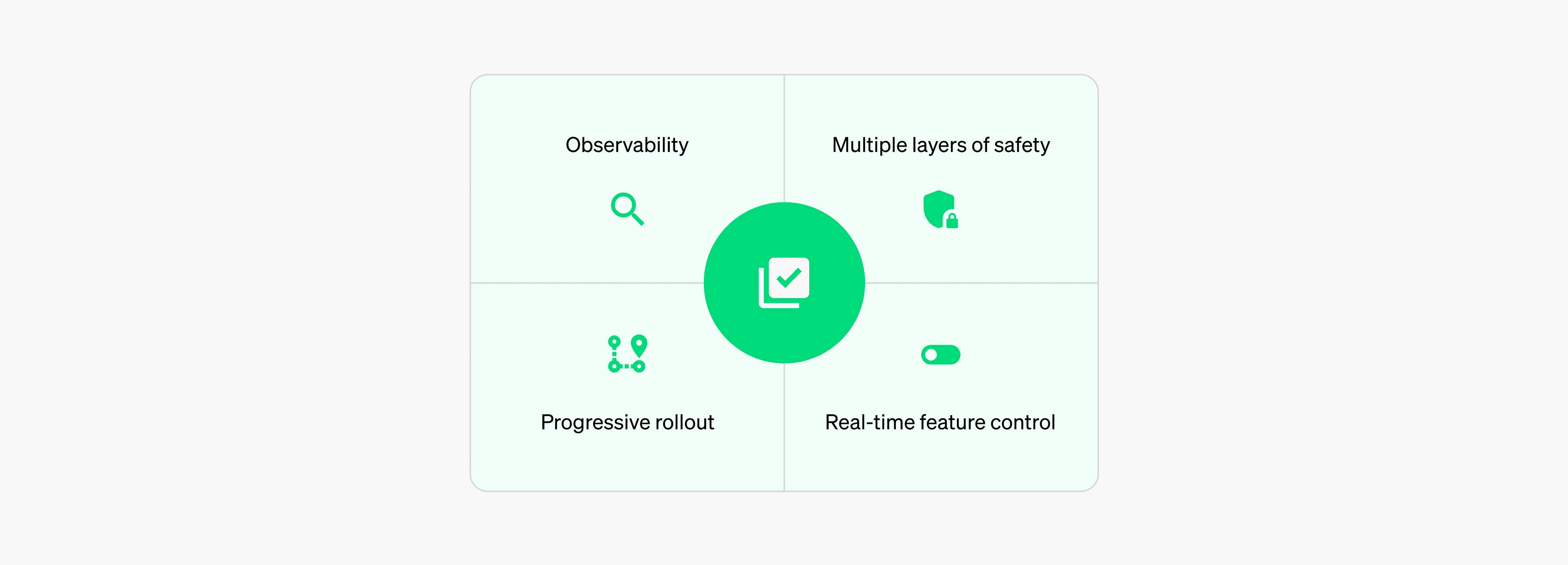
A fine dining experience demands great attention to detail, such as ensuring that every dish is prepared to perfection, the ambiance is flawless, and the service is impeccable. Similarly, critical software releases require enhanced controls to ensure an ideal experience for users.
Each “dining experience” (or release) requires different levels of preparation and safeguards to create an optimal experience, with more precautions taken for riskier or more complex scenarios. This approach ensures the proper steps are in place.
Traditional observability platforms often collect vast amounts of data from multiple sources, making it difficult to focus on what matters most during a critical release. An alternative approach is feature-level observability, which focuses on capturing only relevant, high-value information during key moments.
This minimizes noise, allowing teams to concentrate on urgent issues without being distracted by unnecessary data. By prioritizing essential signals, the system becomes more efficient, reducing the risk of missing important insights and enabling quicker, more effective actions. This technique addresses some of the limitations of traditional observability tools:
- Missed subtle anomalies. Thresholds based on historical data often fail to catch subtle deviations, leading to undetected issues until they escalate.
- Lack of context. Isolated alerts lack context, making it difficult to identify root causes and prioritize effectively.
- Alert fatigue. Overly sensitive thresholds flood teams with alerts, causing desensitization and overlooked critical issues.
- Progressive release. While using staggered release strategies, such as canary deployments, traditional observability platforms struggle to accurately assess the true impact of an alert in such scenarios.
As you release your feature to a small subset of users, you need to keep a close eye on how it’s performing. If anomalies appear, you need capabilities to issue alerts immediately and pause the rollout before things spiral out of control. In short, we need to shift observability left and gather real-time release observability.
Reversibility

A resilient software system should allow immediate reversal of changes when issues arise. Progressive releases allow teams to halt deployment or roll back to previous versions with minimal disruption. This lets teams avoid complex rollback processes by quickly deactivating problematic features.
Think of it like a pilot returning to base safely to address issues on the ground rather than fixing them mid-air. Similarly, reversibility prevents problems from escalating by restoring stability quickly.
For example, a leading social media platform rolls out hundreds of changes every few hours. These updates are first deployed to 2% of users, with systems in place to quickly reverse changes, preventing problematic code from affecting a broader audience.
Feedback loops
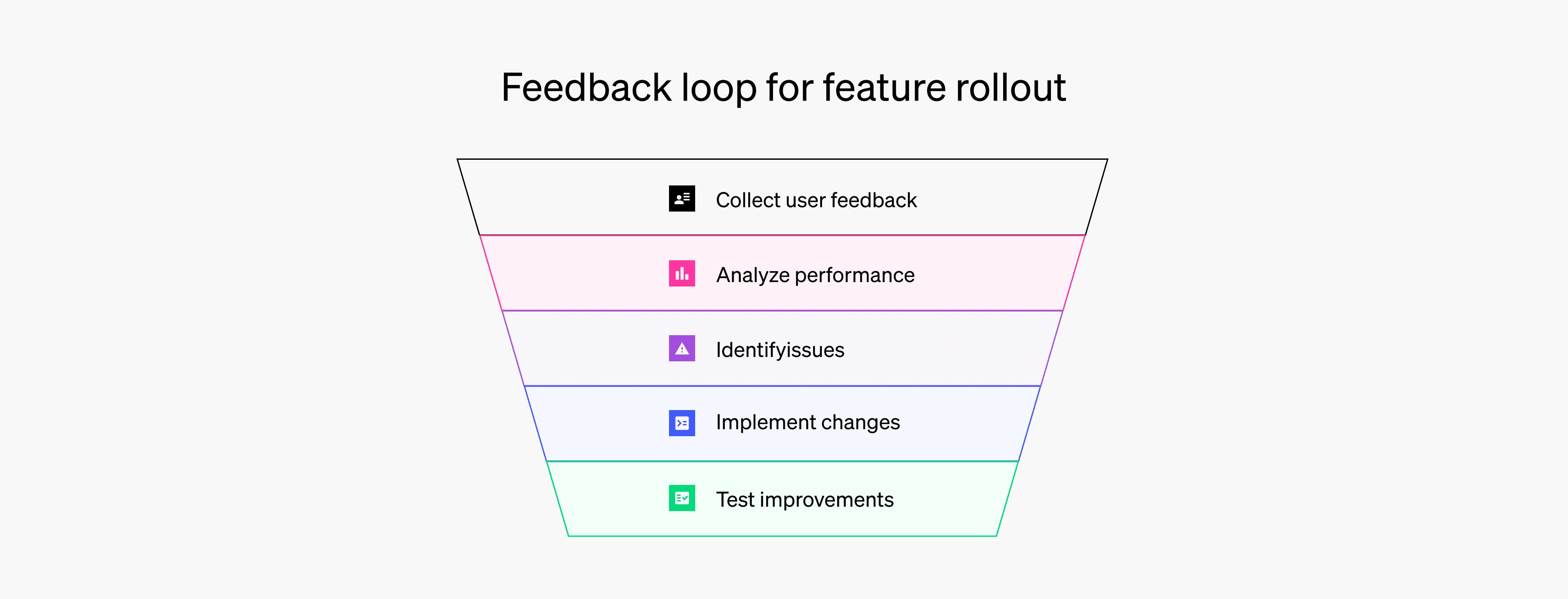
As you gradually roll out a new release, you gain access to valuable user feedback. Are they using the feature as expected? Is the system handling the increased load? How is the software performing under different conditions? These feedback loops allow for fast iteration, letting you refine your feature based on real-world data before that feature is fully deployed.
An analogy would be testing a new car model. You start with a small group of test drivers and gather their feedback on the car’s performance. If they report issues — such as loose steering or unresponsive brakes — you can resolve these problems before moving to mass production.
Applying these principles gives software teams the same advantage. By the time your feature reaches 100% of users, it’s been fine-tuned based on real feedback, making it more robust and user-friendly.
Case for continuous release
Even after a successful rollout, the journey doesn’t end. Software teams are always looking for ways to improve. A culture of experimentation in product releases supports this by encouraging continuous learning, where ideas are tested with real users before committing to full-scale rollouts. This approach fosters innovation, reduces risk, and provides valuable insights for ongoing refinement, helping to ensure that each release builds on the last and drives continuous improvement.
For example, when a large streaming service provider wanted to improve user engagement through personalized recommendations, they didn’t just assume which approach would work best. Instead, they used experiments to compare multiple recommendation algorithms.
Each time a new recommendation method was proposed, it was tested on a subset of users. They evaluated metrics like user watch time and satisfaction before rolling the recommendation feature out to all users. This iterative experimentation allowed the streaming service provider to fine-tune their algorithm and ensure it worked across different demographics.
In the rush to stay competitive, enterprises often take risks that could damage their reputation or degrade user experience. However, by applying design philosophies of safety, reversibility, and continuous learning, you can protect your software, users, and business.
Final thoughts
Releasing software without safeguards is like driving without seatbelts or airbags — it’s risky. To guarantee that every release is safe, reliable, and successful, we must adopt a multi-layered approach.
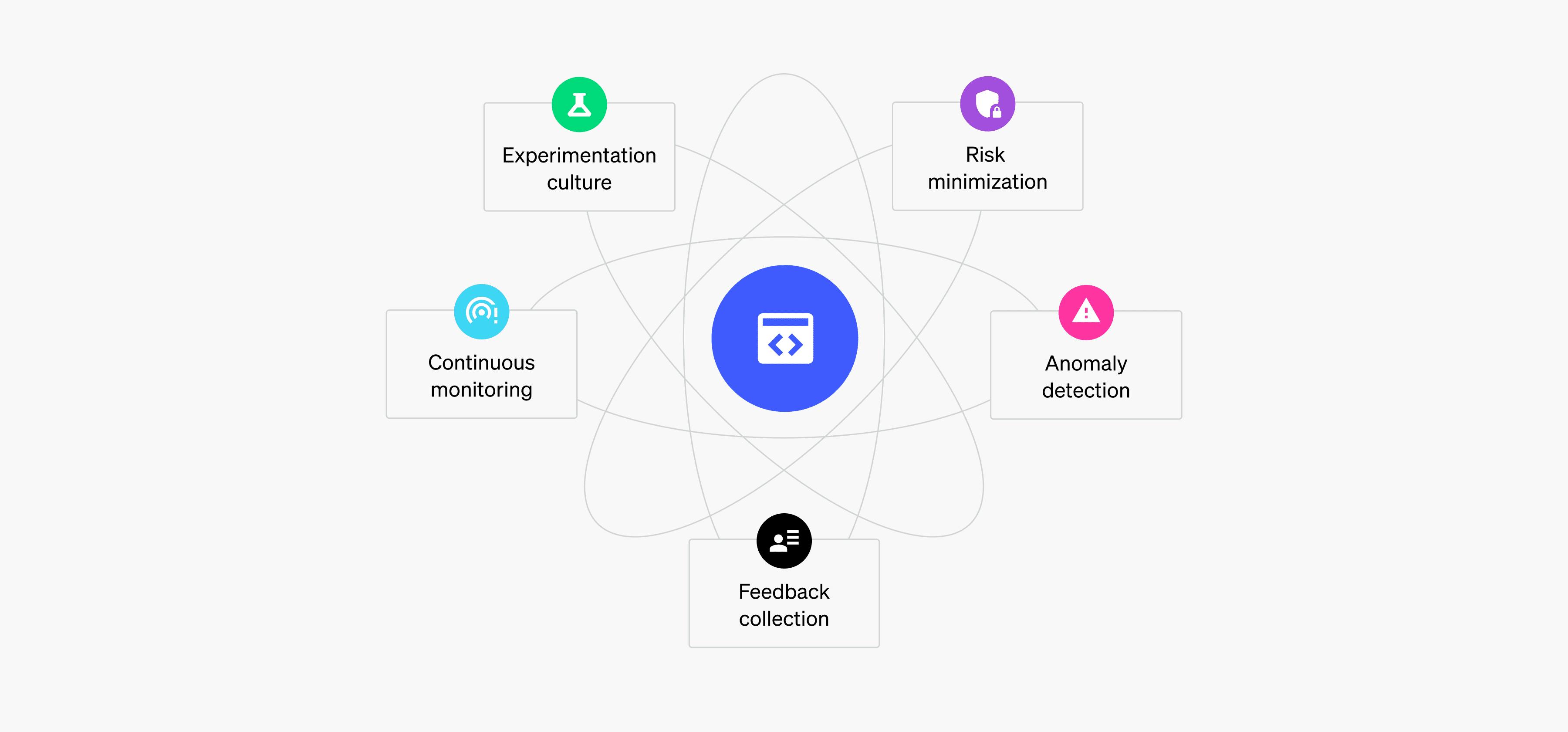
These design philosophies go beyond caution — they represent a strategy. They emphasize that software releases are not one-time events but an ongoing process of learning, adapting, and improving. This leads to safer releases and also supports a culture of innovation, where enterprises can experiment and try new things without fear of widespread failure. Such practices enable controlled risk-taking — the balanced zone where innovation meets reliability.
References
- https://en.wikipedia.org/wiki/Defense_in_depth_(computing)
- https://www.lightspeedhq.com.au/blog/restaurant-soft-openings/
- https://en.wikipedia.org/wiki/Experimental_aircraft
- https://netflixtechblog.com/improve-your-next-experiment-by-learning-better-proxy-metrics-from-past-experiments-64c786c2a3ac
- https://launchdarkly.com/blog/testing-in-production-the-netflix-way/
- https://fortune.com/2017/08/31/facebook-software-project-overhaul/
- https://www.engadget.com/audio/speakers/why-is-the-sonos-app-so-broken-140028060.html
- https://www.braineet.com/blog/innovation-failures
- https://blog.qasource.com/top-epic-technology-failure-examples-that-shook-the-world


